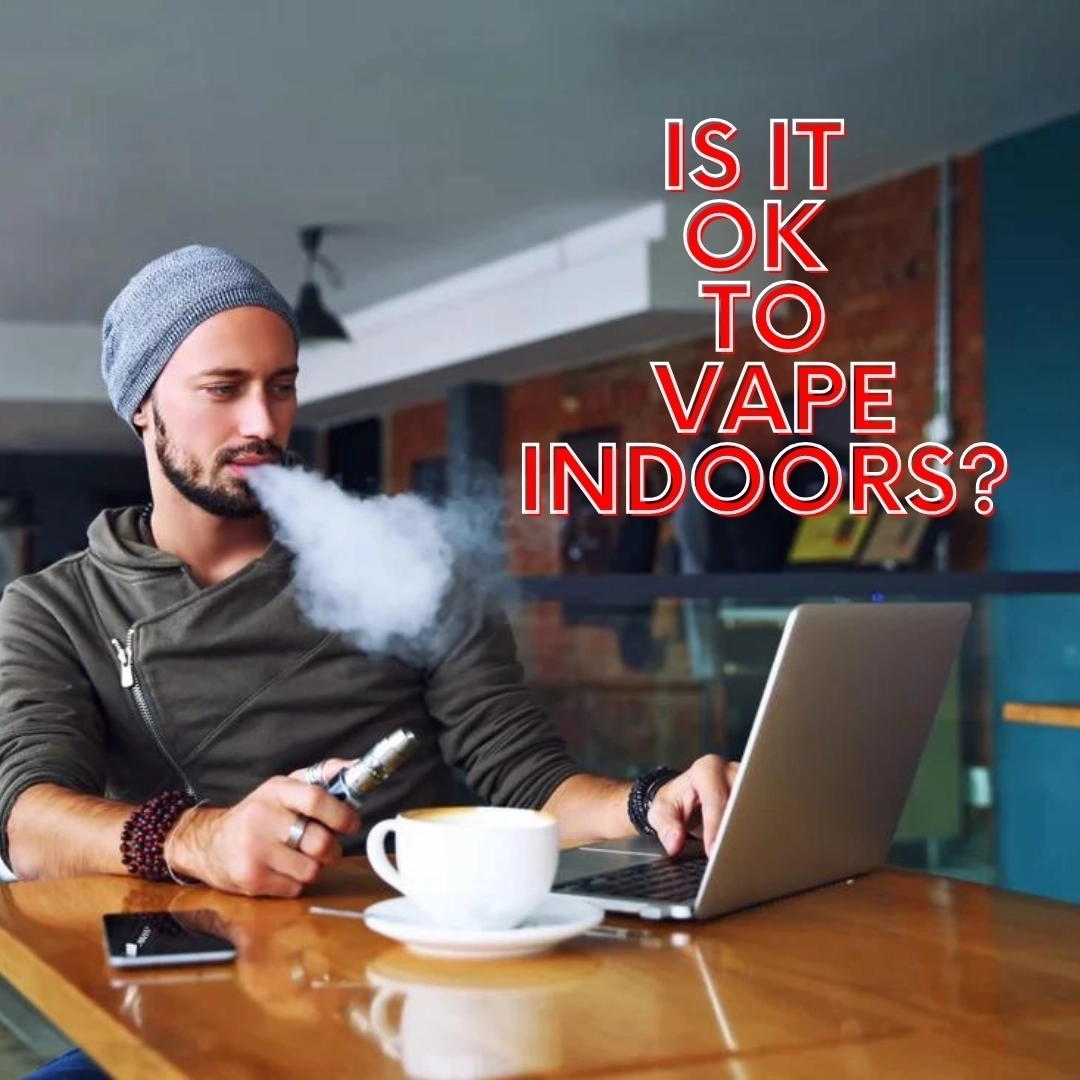Free Shipping on orders R1000 or more!
Is It Ok To Vape Indoors?

With more and more vapers all around the world, governments are questioning the consequences of indoors vaping. The truth is that just like some countries already banned tobacco cigarette smokers from smoking inside public spaces because this could heart non.smokers, should the same be applied to vapers?
One recent study was conducted to see what happened to the vaping clouds and if they could affect non-vapers when indoors.
The truth is that according to this study, a vaping cloud can easily dissipate in just a few seconds. On the other hand, cigarettes clouds can take up to 45 minutes. This is a huge difference. Nevertheless, non-vapers are still worried about the effects that vaping clouds can have on them, even though they dissipate so quickly. So, the researchers of this same study also asked this question. According to them, and looking at the worst case scenario that would be an indoor space without any ventilation, they were able to find particle counts quickly returned to background levels in trials with commercially available vapes.
A new study was later made about the same topic. This study was a part of partnership or collaboration between Fontem Ventures, ETH Zurich, the Swiss Federal Laboratories for Materials Science and Technology, and Kaunas University of Technology in Lithuania. The truth is that in what concerns the cloud dissipation, the conclusion was very similar. But in what concerns the particles, the researchers of this last study reached a different conclusion.
When you were indoors and without any ventilation, researchers were able to find particle concentrations in the air that were increased at every puff. However, this was observed in tobacco, not vaping. According to the researchers of this new study, there shouldn't be any quality issue when you vape indoors.
According to Dr. Grant O'Connell, the Corporate Affairs Manager at Fontem Ventures, “No accumulation of particles was registered in the room following subjects’ vaping. This shows us how fundamentally different exhaled e-vapor particles are compared to those released when smoking conventional cigarettes, the latter of which linger in the air for longer periods of time.”
Right after the vaping participants exhales, researchers looked for particle concentrations. According to them, these were at the same level of traditional cigarettes. However, here is a huge difference between the two. According to Dr. O'Connell, “Exhaled e-vapour aerosol particles have a different chemical composition to a cigarette smoke and here we show the physical properties are also significantly different. This data adds to the growing body of evidence that vaping indoors is unlikely to pose an air quality issue.”
Interestingly enough, this study was published and the results expressed just a couple of weeks after another United States city banned indoor vaping - Milwaukee. This was just another United States city to adhere to the growing number of cities that are trying to add the same rules of regular tobacco to vaping. This can lead to expensive fines that according to this new study, aren't justifiable.
No posts found
Write a review

